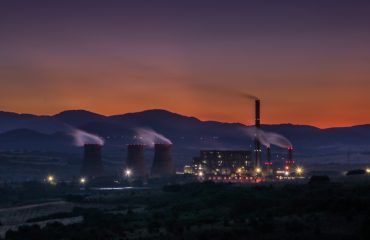The Role of Steel in Earthquake-Resistant Structures
Earthquakes are devastating natural disasters that can cause widespread destruction and loss of life. Designing structures that can withstand these powerful forces is crucial for ensuring public safety. Steel, with its unique properties, plays a vital role in the construction of earthquake-resistant structures, significantly enhancing their resilience and ability to survive seismic events.
The Superior Properties of Steel in Seismic Design
Steel’s effectiveness in earthquake-resistant design stems from several key properties:
- High Tensile Strength: Steel possesses exceptional tensile strength, meaning it can withstand significant pulling forces without breaking. This is crucial during an earthquake, as the ground shaking can induce substantial tension in structural elements.
- Ductility: Steel’s ductility allows it to deform significantly under stress before fracturing. This deformation absorbs seismic energy, preventing catastrophic failure. The structure can bend and sway, dissipating the earthquake’s force rather than collapsing.
- Weldability: Steel’s ease of welding allows for the creation of complex and intricate structural systems, optimizing the distribution of forces during an earthquake. This flexibility in design is invaluable in achieving optimal seismic performance.
- Recyclability: Steel is a highly recyclable material, contributing to sustainable construction practices and reducing the environmental impact of building earthquake-resistant structures.
- Fatigue Resistance: Steel exhibits good fatigue resistance, meaning it can withstand repeated stress cycles without significant degradation. This is important as earthquakes often involve numerous cycles of shaking.
Applications of Steel in Earthquake-Resistant Structures
Steel is used in various ways to enhance the seismic performance of buildings and other structures:
1. Steel Frames:
Steel frames form the primary load-bearing structure in many earthquake-resistant buildings. These frames, composed of columns and beams, are designed to withstand lateral forces generated by ground shaking. The use of moment-resisting connections, which allow for controlled rotation and energy dissipation, is critical in steel frame design for seismic resilience.
2. Steel Bracing:
Steel bracing systems, such as diagonal bracing or chevron bracing, are incorporated into steel frames to provide additional lateral stiffness and strength. These bracing members resist lateral forces and help to prevent excessive deformation during an earthquake.
3. Steel Shear Walls:
Steel shear walls, constructed from steel plates or sections, act as stiff vertical elements that resist lateral forces. They are particularly effective in resisting shear forces, which are prevalent during earthquakes.
4. Base Isolation:
Base isolation systems, which use steel bearings and dampers, decouple the structure from the ground motion, reducing the amount of seismic energy transmitted to the building. This technology significantly reduces the forces acting on the structure during an earthquake.
5. Steel Dampers:
Steel dampers are energy dissipation devices that absorb seismic energy, reducing the building’s response to ground shaking. Various types of steel dampers, such as viscous dampers and yielding dampers, are used to enhance seismic performance.
Design Considerations for Earthquake-Resistant Steel Structures
Designing earthquake-resistant steel structures requires careful consideration of several factors:
- Seismic Zoning: The design must account for the seismic hazard in the specific location, considering the potential ground motion intensity and frequency content.
- Soil Conditions: Soil properties significantly influence the ground motion characteristics and the building’s response. The design must consider the soil type and its potential for liquefaction.
- Building Codes and Standards: Adherence to relevant building codes and standards, such as those developed by organizations like the American Society of Civil Engineers (ASCE) and the International Code Council (ICC), is essential.
- Structural Analysis and Design: Sophisticated structural analysis techniques, including nonlinear dynamic analysis, are employed to evaluate the building’s response to earthquake ground motions.
- Detailing and Construction: Proper detailing and construction are crucial to ensure the integrity and performance of the steel connections and elements.
Conclusion
Steel’s inherent properties, combined with advanced design techniques and construction practices, make it an indispensable material in the construction of earthquake-resistant structures. Its ability to withstand significant forces, deform without fracturing, and absorb seismic energy makes it a key component in safeguarding lives and property during seismic events. As seismic engineering continues to advance, steel will undoubtedly remain a crucial material in building safer and more resilient communities in earthquake-prone regions.
Further Research
For more in-depth information on this topic, you can explore resources from organizations like the American Institute of Steel Construction (AISC), the Structural Engineers Association of California (SEAOC), and various academic institutions specializing in earthquake engineering.
“`




